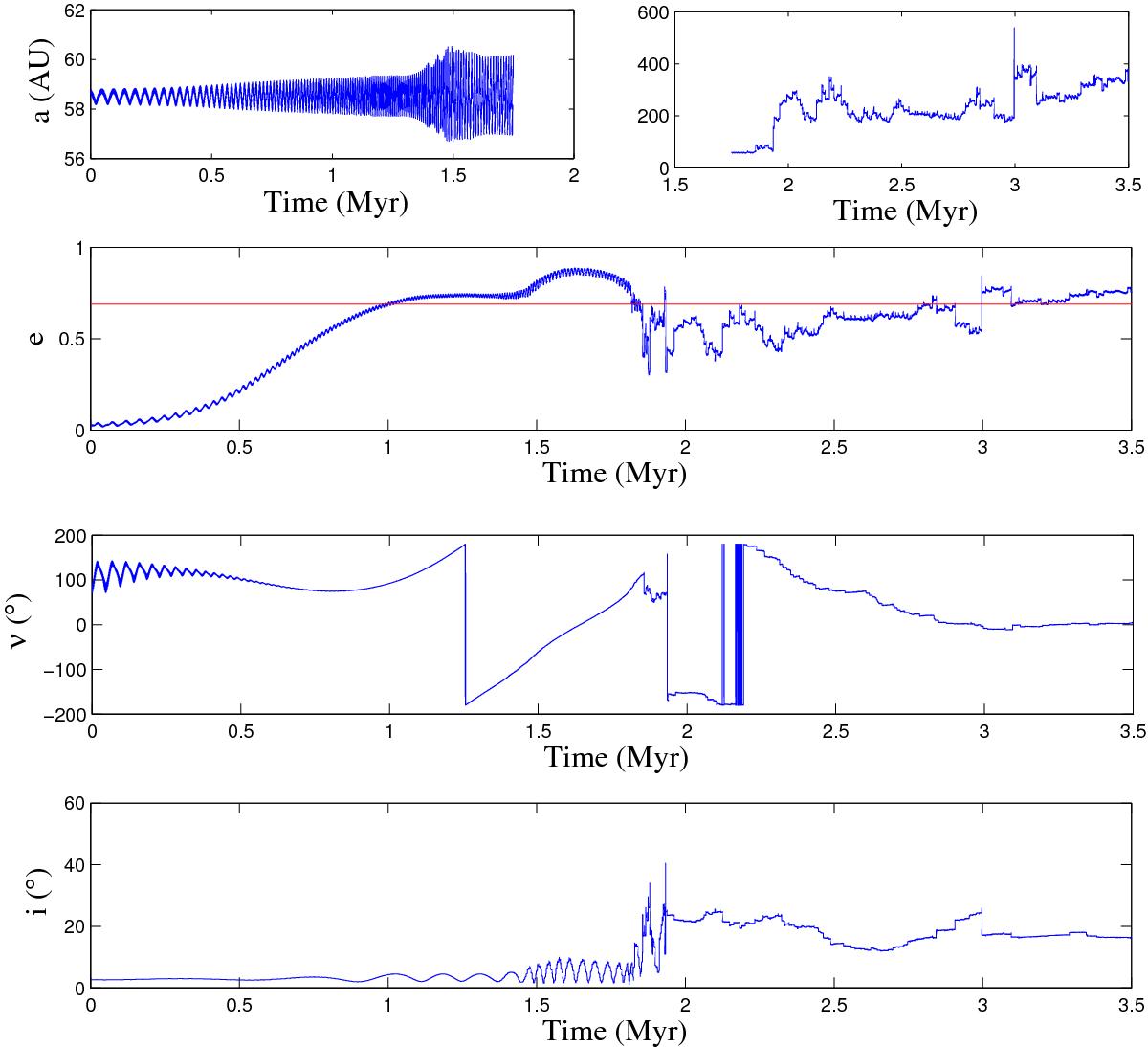Fig. 11

Example evolution of the semi-major axis, eccentricity, longitude of periastron and inclination of a test particle set on a Fom b-like orbit via the 5:2 MMR route, from top to bottom, respectively. The semi-major axis evolution is splitted into the resonant regime, on left, and the secular regime, on right. During its resonant evolution, the test particle endures only small variations of its semi-major axis, while its eccentricity increases. Its suffers a close encounter with Fom c at high eccentricity because its orbits crosses the chaotic zone of Fom c. After the close encounters, its semi-major axis is compatible with that of Fom b. However, its eccentricity is not, as is figured by the horizontal red line which indicates the minimum eccentricity required for an orbit to be compatible with that of Fom b. The eccentricity gradually increases due to secular evolution and finally reaches Fom b compatible values at ~3 Myr with a 3 MJup Fom c. With a Neptune-Saturn mass Fom c, this timescale increases up to values of the order of several 100 Myr. As can be seen in the bottom-panel, the evolution of the eccentricity is accompanied by an evolution of the longitude of periastron, which tends to zero, and thus, to an apsidal alignment of the orbit with this of Fom c.
Current usage metrics show cumulative count of Article Views (full-text article views including HTML views, PDF and ePub downloads, according to the available data) and Abstracts Views on Vision4Press platform.
Data correspond to usage on the plateform after 2015. The current usage metrics is available 48-96 hours after online publication and is updated daily on week days.
Initial download of the metrics may take a while.


